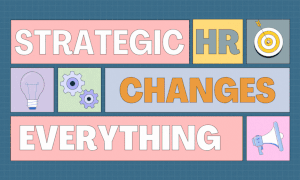
Navigating the Future of Work
By Katrina Grech
In today’s fast-paced and ever-evolving business landscape, the phrase “if only I had a crystal ball” has become a common sentiment. We all wish for the ability to peer into the future and anticipate the challenges and opportunities it holds. While we may not have actual crystal balls, we do possess valuable tools and insights that can help us prepare for the future.
Gartner’s recent study on the “9 Future of Work Trends for 2023“ offers a compelling glimpse into the challenges and transformations awaiting us. It serves as a valuable roadmap for businesses looking to remain agile and competitive in the years ahead. However, to truly benefit from such research, we must first overcome the inertia that often accompanies change and invest time in understanding not just where the world is headed, but also where our organization wants to go.
One pressing issue that stands out in the current landscape is the persistent shortage of skilled staff. While this challenge is not new, the ways to address it are evolving. One emerging theme is the concept of ‘quiet hiring,’ which places a greater emphasis on internal talent mobility. HR professionals are finding themselves increasingly tasked with not only recruiting external talent but also nurturing the growth and movement of existing employees within the organization. This approach helps maintain headcount stability while simultaneously offering opportunities for upskilling and development.
To effectively implement quiet hiring, organizations must invest more time in understanding their employees on a deeper level. This includes identifying their interests, skill sets, and even neuroscientific preferences to determine how they can contribute to the organization’s evolving needs. By aligning employee growth with business priorities, companies can create a win-win situation, where employees feel valued and empowered to contribute to their fullest potential, while the organization benefits from a workforce that can adapt to changing demands.
Another vital aspect of future-proofing your workforce is redefining the criteria for ideal candidates. Traditional qualifications are no longer the sole focus when recruiting. In a world where diversity and inclusion are paramount, businesses are recognizing the importance of values, attitudes, and non-traditional skills. This shift in perspective broadens the talent pool and brings in fresh perspectives that can drive innovation and adaptability.
It’s clear that the future of work is not about simply reacting to external factors but proactively shaping your workforce to meet future challenges head-on.
In conclusion, the future of work and jobs is not a distant concept but a reality that is rapidly approaching. To navigate this future successfully, organizations must embrace proactive strategies that align with their vision and purpose. Leveraging insights from research organizations like Gartner is an essential step in this process. By focusing on skills, diversity, employee well-being, automation, data, agility, sustainability, and global strategies, businesses can position themselves for success in the evolving world of work.
The Gartner study mentioned earlier provides a comprehensive overview of these trends, offering valuable guidance to organizations striving to remain competitive and adaptive. It’s no longer enough to wish for a crystal ball; instead, we must rely on the insights and tools at our disposal to shape our future in the world of work.
As we look ahead, remember that navigating the future of work is not just about reacting to change but actively shaping it. Embrace these trends, invest in your workforce and stay agile in your approach, and you’ll be better prepared to thrive in the evolving landscape of work and jobs.




